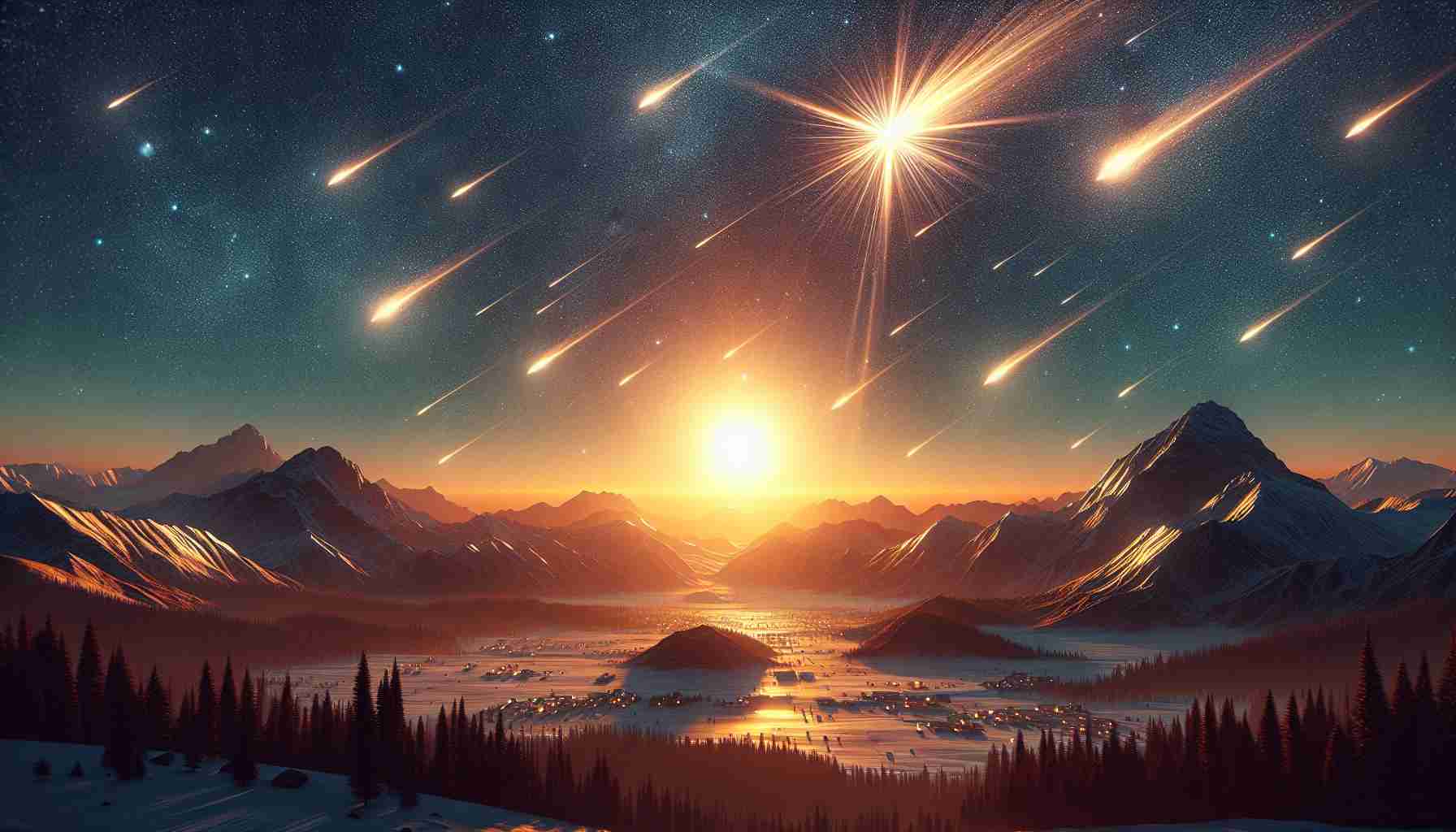An awe-inspiring celestial event has captivated enthusiasts across the globe. The Geminid meteor shower, celebrated for its vibrant meteors, left spectators spellbound this week. Known as one of the richest meteor showers of the year, the Geminids dazzled even with the interference of an almost full moon, proving their worth in the night sky.
Astrophotographer Osama Fathi documented the beauty of the shower from Egypt’s Black Desert, showcasing several meteors amidst wispy clouds illuminated by the moon. The photo featured a quaint mudbrick dovecote, adding a rustic charm to the celestial display.
Meanwhile, astronomers at Hawaii’s Subaru Telescope captured an impressive long-exposure image revealing more than 150 Geminid meteors in just one hour, despite the bright moonlight. This snapshot provided a remarkable glimpse of the vibrant activity in the heavens.
In Canada, photographer Mert Alper Dervis revealed a striking image of a Geminid streaking over the picturesque Lake Simcoe, the nearly full moon lighting up the tranquil landscape.
Across the globe, keen observers like Daichi Fujii from Japan shared extraordinary images of meteors illuminating the skies above Mt. Fuji, where multiple meteors were visible simultaneously, creating a spectacular scene.
For those who missed this year’s show, resources offer guidance for upcoming meteor showers, ensuring that no one misses the next breathtaking celestial performance.
Catch the Celestial Show: Everything You Need to Know About Meteor Showers!
The Magic of Meteor Showers
Meteor showers, particularly the Geminid meteor shower, are among the most anticipated and captivating celestial events for astronomy enthusiasts and casual observers alike. The Geminids, known for their bright and colorful meteors, occur annually in December and offer viewers a stunning display.
What Makes the Geminid Meteor Shower Special?
The Geminid meteor shower is renowned for its high meteor count, with rates often exceeding 100 meteors per hour at peak times. This shower originates from the asteroid 3200 Phaethon, which is unique compared to most other meteor showers derived from comets.
Meteor Shower Viewing Tips
1. Find a Dark Location: To truly enjoy the meteor shower, find a remote area with minimal light pollution. Natural parks or rural areas are great choices.
2. Timing is Key: The best time to watch is typically after midnight when the sky is darkest and the meteors are most active.
3. Be Patient: Give your eyes time to adjust to the darkness. It might take about 20 minutes before you notice more meteors.
4. Use a Blanket or Reclining Chair: This will make your experience more comfortable, allowing you to gaze up at the sky without strain.
5. Check the Weather: Clear skies are essential for meteor watching. Use weather apps to find the best night conditions for viewing.
Limitations of Viewing Meteor Showers
Despite their beauty, several factors can hinder the meteor viewing experience:
– Moonlight: A bright moon can overshadow fainter meteors, as seen during this year’s Geminid shower. Observers faced challenges due to the nearly full moon’s brightness.
– Cloud Cover: Local weather conditions can obstruct visibility, making it essential to check forecasts ahead of time.
Upcoming Meteor Showers
For those who missed the Geminids, other meteor showers are on the horizon:
– Quadrantids: Peaks around January 3-4, known for bright fireballs but less predictable viewing rates.
– Perseids: Occurs in August and is popular due to warmer nights and high meteor counts.
– Orionids: Around mid-October, often featuring bright meteors.
Astrophotography Opportunities
Many photographers and astrophotography enthusiasts seize the opportunity to capture these celestial events. For instance, the Subaru Telescope in Hawaii documented more than 150 Geminid meteors in a single hour during the recent shower, illustrating the potential for striking photographic captures.
Conclusion
Meteor showers like the Geminids provide a breathtaking experience for viewers and photographers around the world. Whether you’re an experienced astronomer or a curious onlooker, the beauty of these celestial displays is accessible to everyone. For more information on upcoming events, photography techniques, and viewing tips, visit Sky & Telescope.
With each passing shower, the universe reminds us of its grandeur—and the next opportunity is just around the corner!
